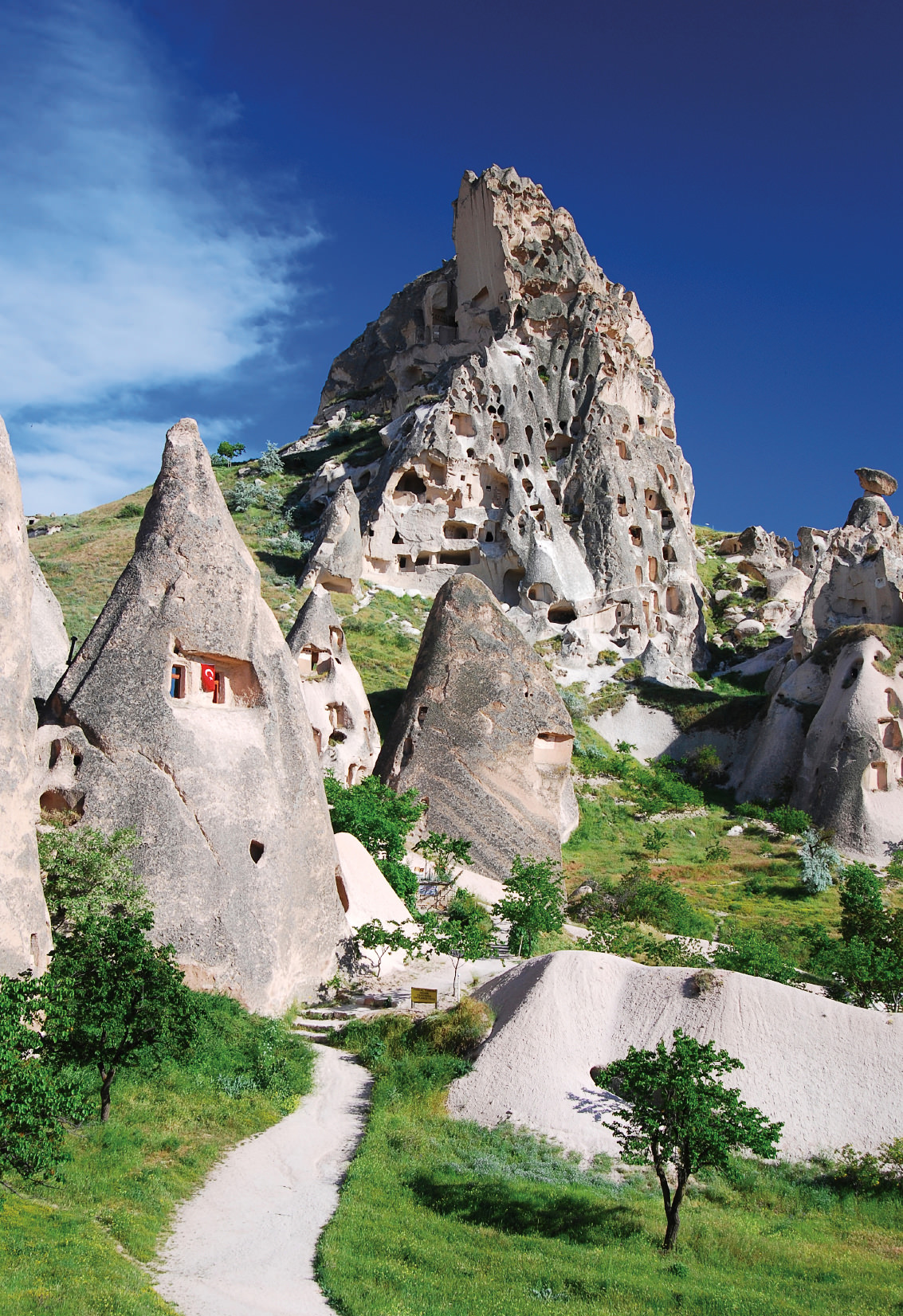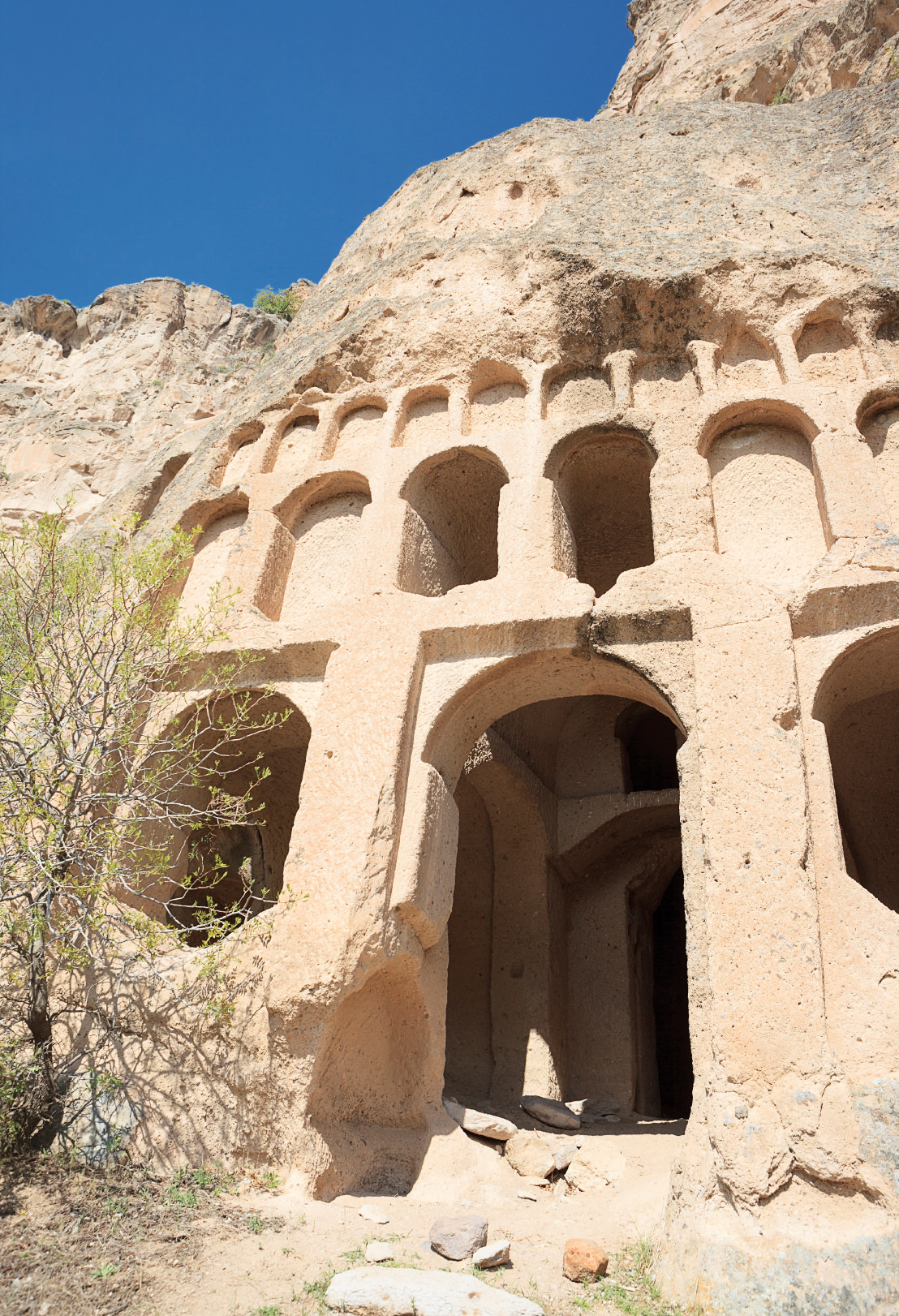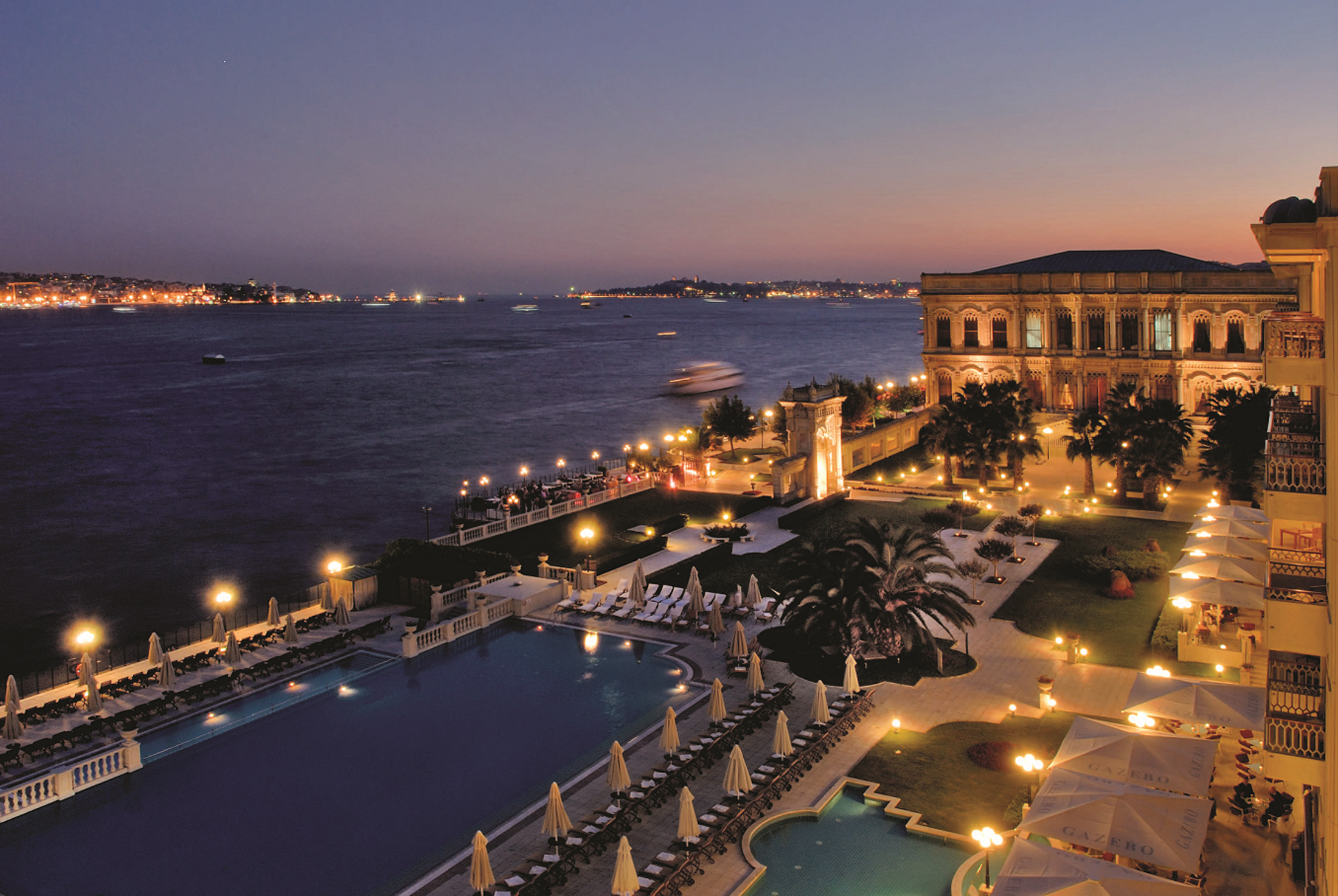The Cave Cities of Cappadocia
Turkish tunnels.

Cappadocia’s natural fortress of Uchisar is carved out of soft tufa rock. Photo ©iStockPhoto.
There’s a reason why St. Basil the Great, his younger brother St. Gregory of Nyssa, and St. Gregory of Nazianzus settled in Cappadocia, carved from living rock, in the fourth century. The special tufa stone of the moonlike lava valleys in this region of Turkey is soft and easy to carve, but hardens when it comes into contact with air. It was ideal for tunnelling out underground cave cities to shelter early Christians escaping persecution, and for carving churches and monasteries into the cliffs from which to spread the Orthodox Christian faith.
Some 150 to 200 underground cities are known to have existed. Some had ventilation shafts, stables for horses and livestock, kitchens, churches, and even graves, and were large enough to lodge 30,000 people for months at a time. Kaymakli Underground City is the widest, with more than 100 tunnels connecting at least eight levels of underground quarters, four of which are open to visitors. You have to bend over to squeeze through its sloping, excavated tunnels 25 metres underground—it’s not for the claustrophobic—but you can stand up in the dimly lit cave rooms. Another city, Derinkuyu, has underground floors that are an astounding 65 metres below the surface.
Of the area’s estimated 3,000 rock-cut churches and chapels, some of the best preserved are found at Göreme Open-Air Museum, a UNESCO World Heritage site. Most date from the 10th to 12th centuries. The recently restored Dark Church—reached at the end of a winding rock tunnel and so named because of the minimal sunlight that penetrates inside—is painted with still-vivid wall paintings showing the life of Christ on its multi-domed ceiling and columns. The larger Buckle Church elicits gasps because of the brilliant blue hues from the lapis lazuli background of its wall paintings.

Above ground, erosion continues to sculpt a magical landscape of rose-and-white-coloured gorges, riddled with rock formations. In the summer months, up to 100 hot-air balloons float upward daily at dawn to offer visitors a bird’s-eye view of the jaw-dropping scenery.
Hike through Rose Valley, where the air is filled with the song of nightingales, and you can see more churches carved into rock cliffs, and many dovecotes—holes hollowed out of the upper cliff faces that housed pigeons and doves. The birds were essential to the lives of people over the centuries: pigeon droppings fertilized the fields and egg whites helped make the plaster walls, which were later painted.
Today, villagers still live in and around the original hobbity holes. Travellers can also make like troglodytes and stay in boutique cave hotels like Esbelli Evi and Argos. But with polished wood floors, Turkish rugs, Wi-Fi, and spacious deluxe bathrooms, these digs are a lot more comfortable than the ascetic cave dwellings of Cappadocia’s old saints.
Photos ©iStockphoto/Emicristea (top) and ©iStockphoto/Apprott (bottom).


